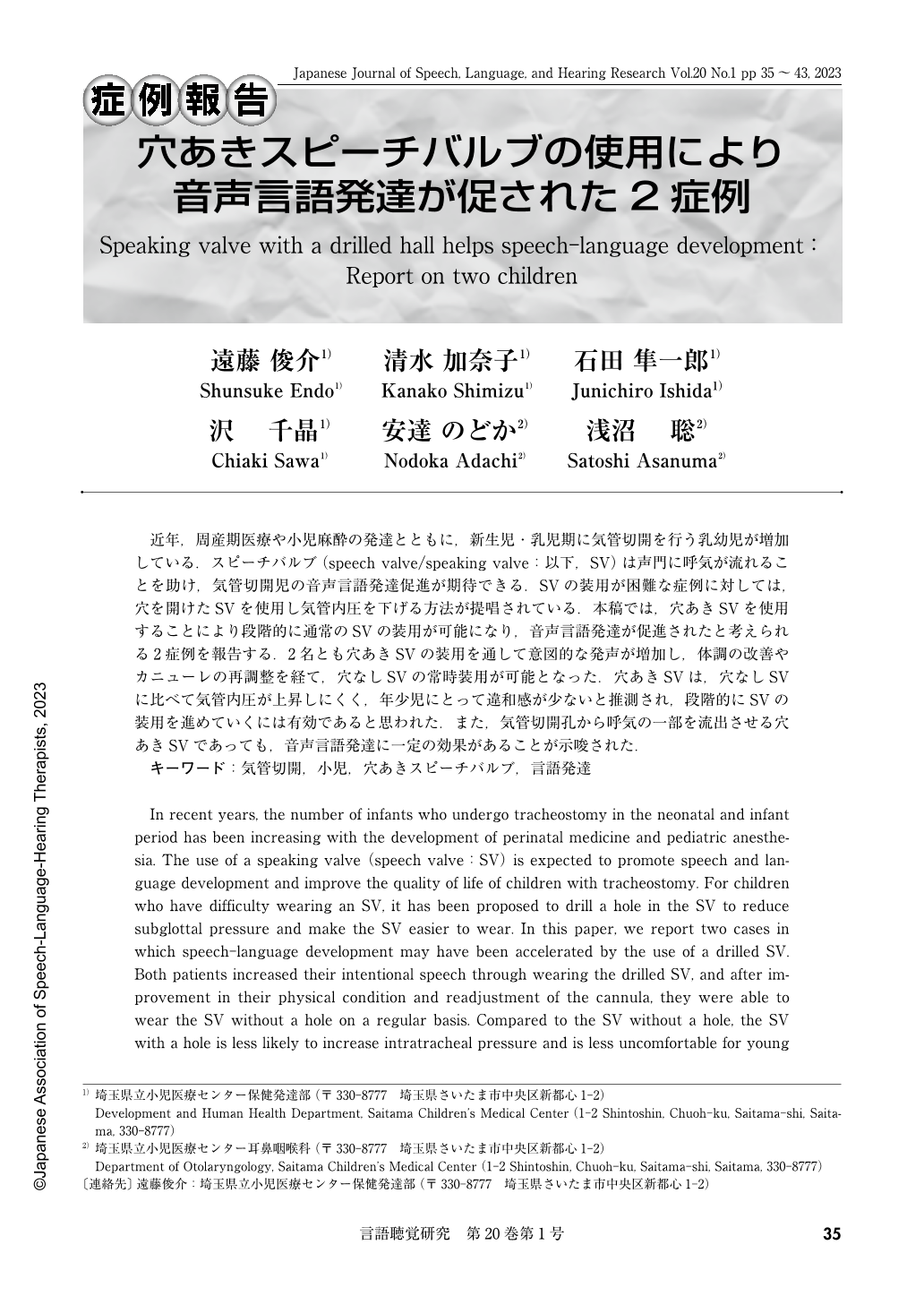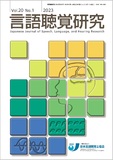Japanese
English
- 有料閲覧
- Abstract 文献概要
- 1ページ目 Look Inside
- 参考文献 Reference
近年,周産期医療や小児麻酔の発達とともに,新生児・乳児期に気管切開を行う乳幼児が増加している.スピーチバルブ(speech valve/speaking valve:以下,SV)は声門に呼気が流れることを助け,気管切開児の音声言語発達促進が期待できる.SVの装用が困難な症例に対しては,穴を開けたSVを使用し気管内圧を下げる方法が提唱されている.本稿では,穴あきSVを使用することにより段階的に通常のSVの装用が可能になり,音声言語発達が促進されたと考えられる2症例を報告する.2名とも穴あきSVの装用を通して意図的な発声が増加し,体調の改善やカニューレの再調整を経て,穴なしSVの常時装用が可能となった.穴あきSVは,穴なしSVに比べて気管内圧が上昇しにくく,年少児にとって違和感が少ないと推測され,段階的にSVの装用を進めていくには有効であると思われた.また,気管切開孔から呼気の一部を流出させる穴あきSVであっても,音声言語発達に一定の効果があることが示唆された.
In recent years, the number of infants who undergo tracheostomy in the neonatal and infant period has been increasing with the development of perinatal medicine and pediatric anesthesia. The use of a speaking valve (speech valve:SV) is expected to promote speech and language development and improve the quality of life of children with tracheostomy. For children who have difficulty wearing an SV, it has been proposed to drill a hole in the SV to reduce subglottal pressure and make the SV easier to wear. In this paper, we report two cases in which speech-language development may have been accelerated by the use of a drilled SV. Both patients increased their intentional speech through wearing the drilled SV, and after improvement in their physical condition and readjustment of the cannula, they were able to wear the SV without a hole on a regular basis. Compared to the SV without a hole, the SV with a hole is less likely to increase intratracheal pressure and is less uncomfortable for young children, and thus it is considered to be effective for gradual SV use. The results also suggest that SV with a hole that allows a portion of the exhaled air to flow out through the tracheostomy hole has a certain effect on speech and language development.

Copyright © 2023, Japanese Association of Speech-Language-Hearing Therapists. All rights reserved.


